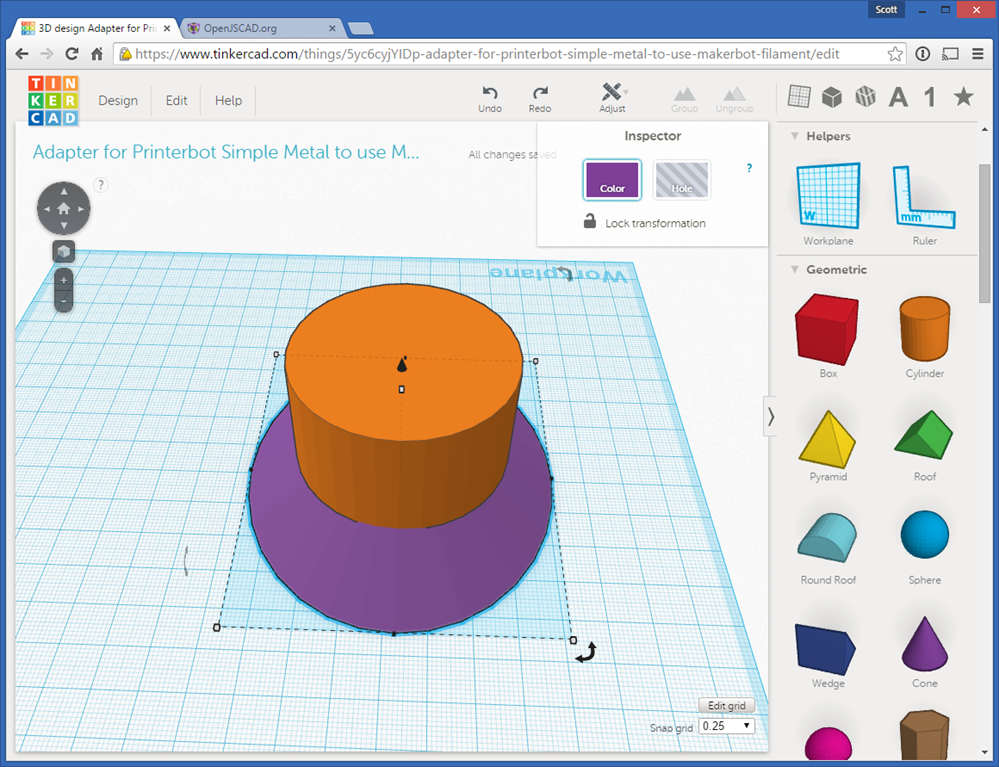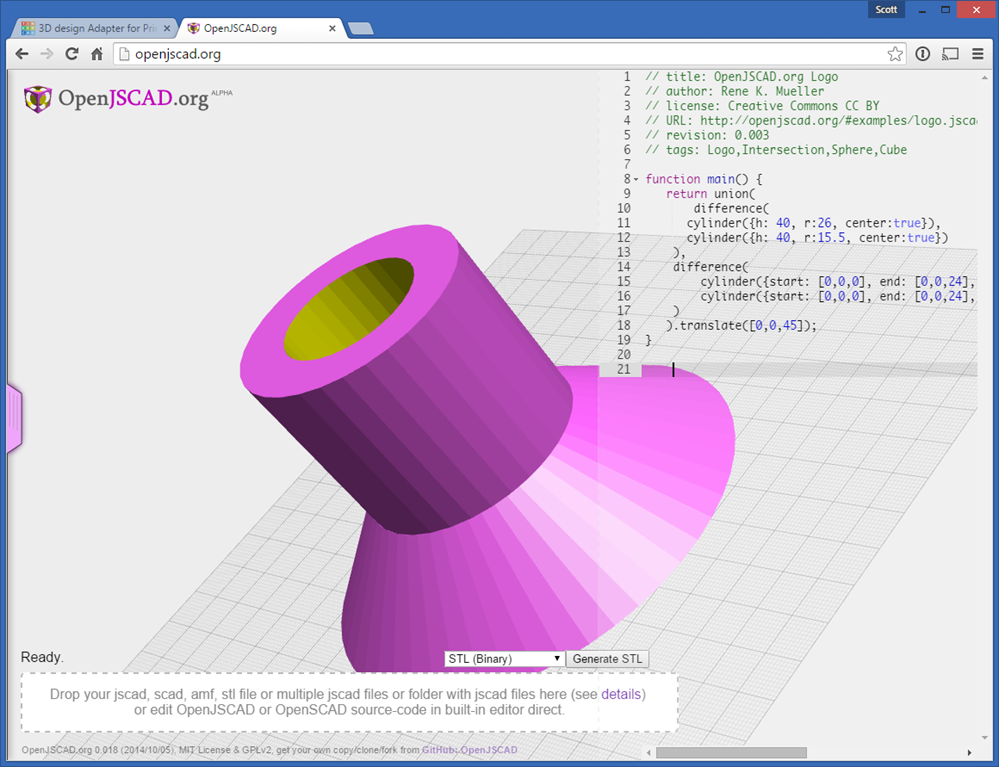I have this 3D Printed Spool Holder on the top of my Printrbot Simple Metal 3D Printerl that looks like this:
It works great and fits my RioRand generic PLA Filament spool exactly. However, I went down to Fry's Electronics to get some filament today and all they had was small Makerbot spools. They were cheap, so I got two. When I got home I noticed that the hole in the spool is HUGE. It totally won't fit my spool holder.
This brings us to..
The Three Rules of 3D Printing
- All problems in 3D Printing can be solved by 3D Printing something
- The only things that 3D Printing people print is stuff to make their 3D printers work better.
- See rules 1 and 2.
So, I needed an adapter for my 3D Printer (which I have nearly a week of experience with, so fear me) and opened up Tinkercad.com to create it. Someone recommended Tinkercad as a great HTML5 website for doing quick designs.

I got lost in this app. I couldn't find a way to make two cylinders and simply center them within each other. You can nudge them around but can't center them against their own centers. I actually found forum posts going back to 2012 with members of the team saying "yes, we need that feature" but couldn't figure it out. It's a lovely app and my kids enjoy it but I feel like if you want absolute precision this may not be the place. Then I realized that perhaps this 3D Model was more of a math problem than a modeling problem.
Now I realize I'm biased, and I am a programmer, but with a small set of digital calipers and the excellent OpenJSCAD documentation I was able to create my adapter in just 10 minutes of hacking and just 7 to 12 lines of JavaScript (depending on how you count).
function main() {
return union(
difference(
cylinder({h: 40, r:26, center:true}),
cylinder({h: 40, r:15.5, center:true})
),
difference(
cylinder({start: [0,0,0], end: [0,0,24], r1: 52.5, r2: 26, fn: 50}).translate([0,0,-44]),
cylinder({start: [0,0,0], end: [0,0,24], r1: 32.5, r2: 15.5, fn: 50}).translate([0,0,-44])
)
).translate([0,0,45]);
} From here I downloaded my STL (the 3D description of the object)...

I then ran it through the Microsoft 3D Model Repair Service (a good idea to make sure all your designs are manifold and watertight).

Then into Repetier and sliced into G-Code (instructions to the printer on how to move) and printed it with OctoPrint on my OctoPi.

I'm clearly not a 3D designer or modeler and I apparently don't have the patience for CAD tools that won't let me type in a direct number. I KNOW this should be 31mm in diameter, don't force me to use a mouse to "eyeball it." I was thoroughly impressed with the concept and execution of OpenJSCAD. Of course, OpenJSCAD is a JavaScript implementation of OpenSCAD, the "Programmers Solid 3D CAD Modeler" so I'll be exploring their software and amazing gallery as well! If you're creating anything with regularity that's more mechanical and less organic, OpenJSCAD or OpenSCAD is the way to go, clearly.
Sponsor: Big thanks to Amyuni for sponsoring the feed this week! Amyuni PDF Converter and Creator for .NET enables you to integrate powerful PDF functionality with just a few lines of code. Generate and process optimized PDFs with industry proven technology. Switch Now!
© 2014 Scott Hanselman. All rights reserved.





